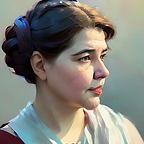Starship: From idea to explosion
At 8:33am Central Time April 20, Starship 24 lifted off atop Super Heavy Booster 7. During launch, keen eyes and well-pointed cameras were able to determine not all of the Booster’s engines were firing, and periodic changes in the rocket’s flame seemed to indicate a few things ceased to function in fiery ways. Once making it through MaxQ, the rocket, ah, ceased its upward movement, and the booster and Starship tumbled toward the ocean together, where they were ultimately blown up prior to impact.
A full assessment of just what happened will have to be done before the FAA allows more launches to take place.
As has been pointed out by a lot of people, had this happened during the SLS launch in November 2022, it would have led to congressional hearings, and folks would have probably been fired at the very least, and the program could have potentially been cancelled. SLS represents our historic way of designing missions: large government contractors spend years and billions of dollars carefully building things that work correctly the first time, and all failure modes have to thought of ahead of time and engineered for without a lot of test data.
SpaceX, however, uses an iterative approach that collects data and refines defines as version after…
